
Overview
CABLES AND CONNECTORS FOR CHS SENSORS
Continuous measurement
Probes with a connector (S8, VP6, Memosens,…) and a cable fixed in the terminal board of the converter are standard.
S8*
- two-pole basic connector
- can transmit only one signal, so it is suitable where a temperature sensor is not needed or it is located outside the pH probe
- for humid environment can be used with a suitable armature, for example CHS WaterDip
- cable:
- diameter 3 mm, weak shielding - prone to electromagnetic interference
- recommended length up to 5 meters
- installation: away from sources of interference (power cables, electric motors, transformers)
- prone to stray currents on metal constructions
VP6
- VarioPin connector with 6 pins can transmit multiple signals. Suitable for probes with integrated temperature sensor
- robust metal construction and good water resistance
- use in almost all environments and applications
- cable:
- double shielding, less prone to electromagnetic interference
- recommended length up to 20 meters
installation: away from sources of interference (power cables, electric motors, transformers)
Memosens
- inductive connector
- signal transmission does not provide by contact of metal components, but by induction between the coils in the probe and the cable
- resistant to almost any environment, it does not mind moisture or corrosive substances
- the digital signal is resistant to any interference
- suitable for any application, especially in humid and corrosive environments
- cable:
- the digital signal is not prone to interference
- recommended length up to 20 meters
- installation: also possible in cable ways with power conductors
Probes with a fixed cable are used rather seldom in case of simpler measuring systems. Usually for little sophisticated converters, where the signal cable is connected to an external (usually BNC) connector. This is a source of problems due to environmental corrosion of the connector.
Picture of sensor´s connectors:
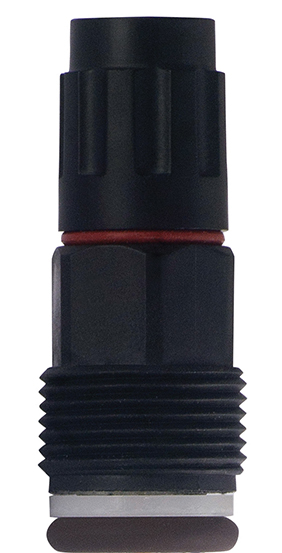 | 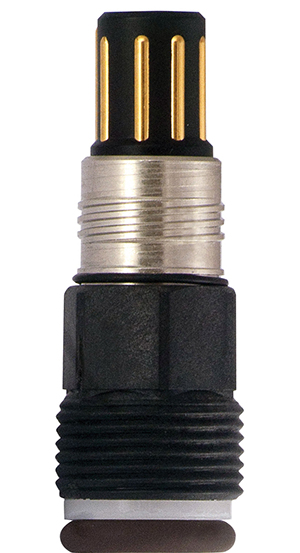 | 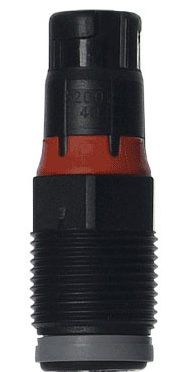 |
| connector S8 | connector VP6 | connector Memosens |
Laboratory and portable measurements
Probe with connector (usually S7*)
- used as an economical variant where an external temperature sensor is placed or temperature measurement is not required
- two-pin S7 connector can only transmit one signal
- recommended as laboratory solution
- in case of interference is recommended to use a braided cable (5 mm)
Fixed cable
- is required in case of integrated temperature sensor
- suitable for portable measurements
- the absence of a connector is good for humid environments
- if the entire probe is accidentally immersed in the sample, a risk of leakage is not as high as in case of connector
- there is no risk of probe´s breakage when connector is released
Connectors on the instrument side which are usually used for pH measurement:
| Connector | Description |
| BNC | bayonet two-pole connector: central pin (measuring electrode signal) and bayonet (reference signal - shielding) |
| DIN | coaxial antenna connector: central pin (measuring electrode signal) and ring (reference signal - shielding) |
Connectors such as Cinch, Jack, "banana" and others are commonly used to transmit the temperature sensor signal. Usually two-pole versions, or two separate bananas. In the case of only one pole, the (-) pole of the temperature measurement is common to the reference of the pH probe. It depends on the manufacturer of the pH meter.
Note:
* S7/S8 cable part of connector is identical, the difference is in the head of probe
– S7: laboratory version
– S8: process type with thread (PG 13.5) for pipe mounting.
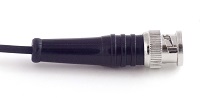 |  |
| connector BNC | connector DIN |
Memosens
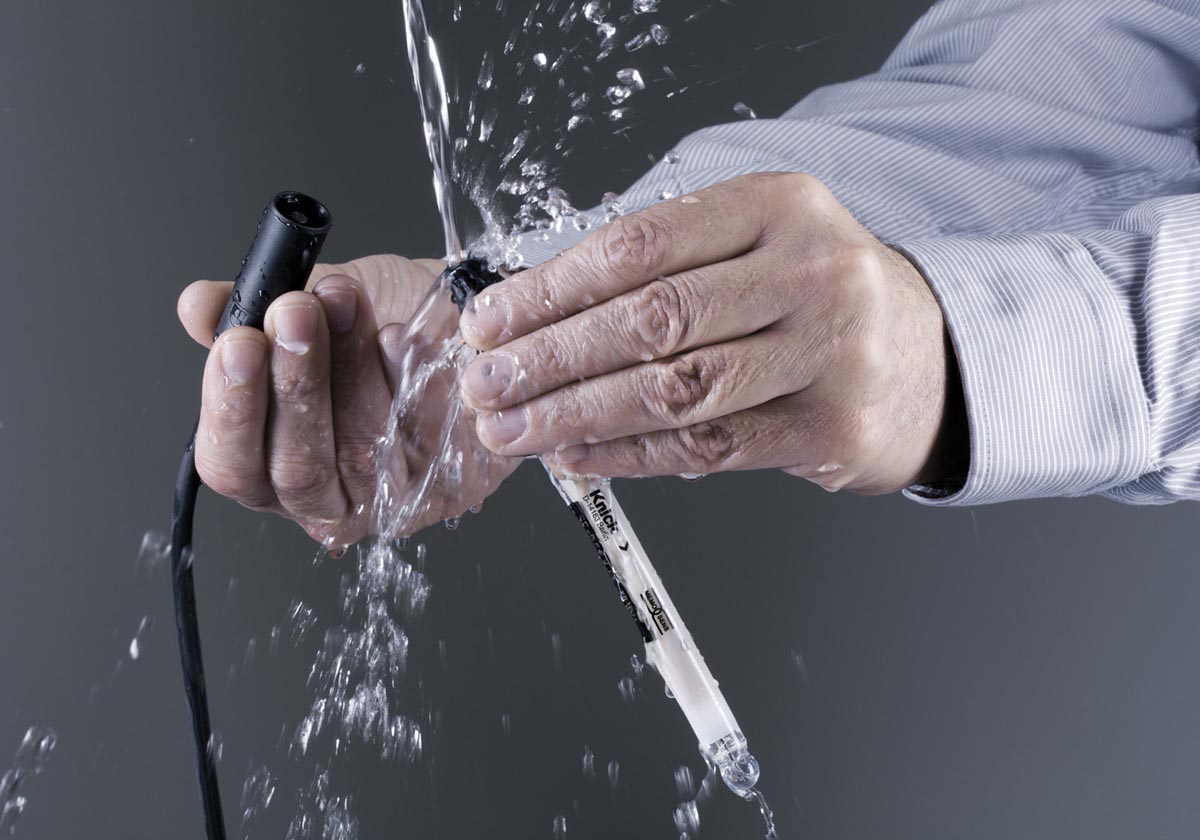
The concept of using digital Memosens sensors is globally unique.
As a result of contactless transmission technology, the Memosens plug & play system is 100% waterproof and resistant to dirt, corrosion, salt bridges, overpressure and interference potentials. This makes it clearly superior to conventional systems. Its robust connector also makes Memosens extremely resistant to mechanical influences. Inductive signal transmission results in perfect galvanic isolation. Even when system components or process media are insufficiently grounded or frequency converters are causing EMC interference, stable, precise measurements can still be realized. Further equipotential bonding measures such as solution ground are unnecessary
Main benefits
- Contactless coupling
- Pre-calibrated sensors
- Intelligent diagnostics
- Mobile control of process sensors
Look at the Knick here to get more information.
Physical Properties Measurement
Physical properties measurement is an area covering various electrochemical and spectrophotometric methods. The most commonly measured parameters are: pH, redox-potential (ORP), conductivity, dissolved oxygen concentration (DO), salinity, total dissolved solids (TDS) and turbidity. Area of Physical Properties Measurement also includes colorimetry, which is uses mostly for:total and free chlorine, cyanuric acid, pH, chlorine dioxide, bromine and ozone.
This section includes interesting information in following areas
- Laboratorny applications
- Memosens technology
- Noise meters
- Optical method for dissolved oxygen measurement
- Process measurement
- Useful information (hints and tips)
If you are interested in our products, please look at our laboratory product line or products for process measurement.
Introduction
This section is under construction.





 0
0
 0
0